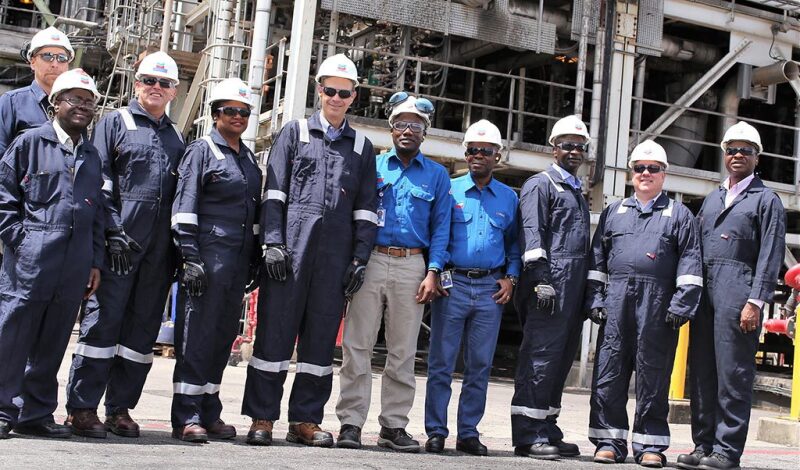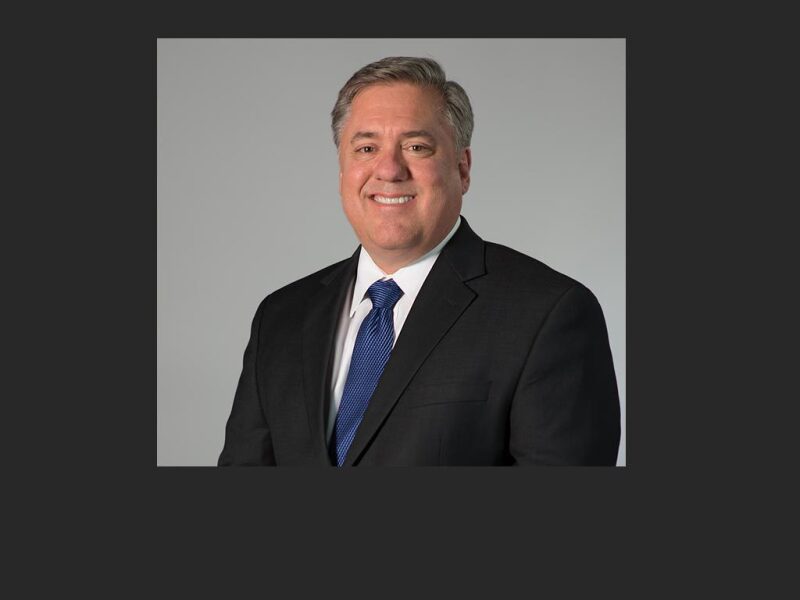Clay Neff is president of Chevron Africa and Latin America Exploration and Production Company, a position he has held since January 2017. He is responsible for Chevron’s oil and gas exploration and production (E&P) activities in both regions.
Before his current position, Neff was managing director of Chevron’s Nigeria/Mid-Africa business unit. Previously, Neff was part of Chevron’s Southern Africa strategic business unit, initially as Production Operations manager, and later as Asset Development general manager. He has also held a number of management roles with Chevron in North America.
Neff joined Chevron in 1985 as a drilling engineer for the Gulf of Mexico business unit in Lafayette, Louisiana, after earning a bachelor’s degree in petroleum engineering from Louisiana State University.
The Way Ahead spoke with Clay Neff on a number of topics, including his personal experiences, the E&P business environment, as well as his advice to young professionals.
You started your career 35 years ago with Chevron as a drilling engineer. Since then, you have held several positions of increasing responsibility. What would you say is the formula to a successful career?
There are two fundamental things to having a successful career. First, commit yourself to excellence. Be the best you can be in the role you are in. While it is important to plan your career development, the key is to focus on performing at the highest level and deliver results in your current role.
The other key element is to be flexible and open to different opportunities that could expand your professional horizons. Being flexible helps expand your avenues for growth and it gives you insights into other possibilities that you might not be aware of for career advancement.
Over the years, I have been fortunate to work in various roles in petroleum and facilities engineering, operations and the midstream commercial space across the world. Each of these experiences allowed me to grow, which enabled me to take on new and more challenging opportunities.
What is the most important lesson you have learned in your career that you think would benefit young professionals today?
I believe building a strong professional network is extremely important. Building relationships is crucial in today’s world. My advice is to get to know your workmates and proactively seek out your colleagues and mentors early on in your career. It is a good idea to know people outside your work group, company or industry as well.
It is also important to make sure you always treat people with respect, from the most junior to the most senior executive. The oil and gas industry is a close-knit, supportive community. My advice is to start building those relationships early on because you will run into the same people later in your career. Be supportive, respectful, and proactive.
The oil and gas industry is marked by price volatility, and faces a potentially changing energy mix, challenging engineers to think about the long term. How can petroleum engineers become multiskilled professionals with knowledge and experience not just in their traditional fields, but also in big data, artificial intelligence, digitalization, data transformation?
The energy industry is a highly complex industry, and I believe it rewards those individuals who are life-long learners. My advice to young professionals is never lose that hunger for new information and for new ways of doing things. Continuously seeking ways to increase and enhance your skills is fundamental for every engineer to be successful over a long career. This includes on-the-job learning, regular training classes, or maybe going back to school for an additional degree.
Whether it is improving your technical skills or leadership skills, having a desire to learn and to better yourself is fundamental. When I started my career back in 1985, the personal computer was just coming out. Since then, we have seen a complete transformation in how we do our work and the tools available in our field. Digital tools, big data and data analytics, and new yet-to-be-determined technology will become even more critical in our field, and I encourage professionals at all levels to be continuous learners and stay hungry for new knowledge.
How does managing operations and assets in Latin America or Africa differ from other Chevron projects in the US, including offshore in the Gulf of Mexico as well as onshore in the Permian and San Joaquin Basin?
It is an exciting time for us at Chevron Africa and Latin America Exploration & Production. We are one of the four upstream operating companies within Chevron and we account for approximately 22% of the company’s overall production. We operate in Argentina, Brazil, Colombia, Venezuela, Angola, Nigeria, and Republic of Congo and have interests in Ghana, Mexico, and Suriname, where we explore and produce the energy that helps countries and people move forward. Outside of North America, these regions have the largest accessible, discovered undeveloped and yet-to-find resource base in the world.
We have a diverse portfolio that includes all asset classes, particularly in Latin America, including conventional natural gas production in Colombia, heavy oil assets in Venezuela, deepwater assets in Brazil, and unconventional production in Argentina. The value we bring as a global company is that we can transfer to these assets the technology and learnings from our projects in the US, the Gulf of Mexico, San Joaquin Valley, and the Permian, among others.
In Argentina’s Vaca Muerta formation, for instance, we are transferring our factory model from the Permian Basin to reduce well cost, cycle time, and operating expenses. This year, Chevron Argentina plans 60–70 horizontal wells, the majority of which are in the Loma Campana development, supplemented by pilot programs in El Trapial and Narambuena. We are proud to be the largest foreign investor in the Vaca Muerta, employing hundreds of talented employees and contractors, and transferring state-of-the-art technology and know-how.
In order to be successful, whether it is in the US or any of our other locations including Africa and Latin America, being a good partner and citizen in the communities where we live and work is critical. We take a long view in the countries where we operate and we strive to build lasting partnerships that contribute to local economies.

Could you list some of the biggest challenges that the industry is facing in the Latin American region, and how is Chevron managing them?
With one of the largest resource bases in the world, there are significant opportunities in the Latin America region. We have been a major player in Latin America for over a century and it continues to be a region of vital interest.
We face risks of varying degrees wherever we decide to invest. Managing dynamic business environments is one of Chevron's strengths and we take a unique approach in the way we partner in different areas of the world.
We have a long history of delivering world-scale, challenging projects by being a good partner. We transfer scientific, technological and operational knowledge to our host countries, working with partners, government ministries, educational institutions and other organizations to share what we know, contribute to the training of local talent, and help develop projects that generate income for local communities.
Chevron is recognized globally as partner of choice and we are grateful to play a part in producing more energy in our regions, while investing in the communities where we operate.

Technology and digitalization have been changing the industry and the way we do business. Chevron has been seen to be at the forefront of integrating analytics and digitalization into the oil and gas operations. How have Chevron’s partnerships (e.g., Microsoft) and data integration impacted operation, surveillance, and other costs. How have they increased efficiency, safety and reliability?
Technology is only as good as its application. A lot of what we do at Chevron is transferring technology to new opportunities, taking them from the Permian to Argentina or from our operations in the deepwater Gulf of Mexico to Brazil, Angola, and Nigeria, for example.
We have been able to more effectively turn data into information on a real-time basis and this has enabled us to make higher-quality decisions in a shorter timeframe. This improves how we develop projects and how we operate our assets. Every day we are honing our ability to manage big data and data analytics, a competitive advantage now and into the future. These digital technologies have played a critical role in accelerating business value for us in the key areas of revenue, safety, reliability, and cost.
Safety in our operations is enhanced by digital technologies, such as unmanned aerial systems, wearable sensors, real-time location systems, augmented reality, robots, and the Industrial Internet of Things. With regards to our partnership with Microsoft, we have been working together for several years on data analytics and cloud computing, as well as on utilizing Microsoft HoloLens augmented reality technology. This technology enables users to troubleshoot problems by connecting field personnel, through self-contained holographic computer headsets, with subject matter experts located around the world. We are currently using Microsoft HoloLens technology in Argentina for example, which is reducing downtime.
Through our integrated Decision Support Centers, which have been established in every upstream business unit, we are leveraging data collected enterprise-wide. For example, our Drilling & Completions Decision Support Center monitors the drilling of all complex wells across the globe and centralizes key processes such as geosteering.
Technology and digitalization are truly transforming the way we work and helping us solve complex challenges facing the industry.
What technologies do you see having the largest impact on Chevron’s E&P operations offshore and onshore in the mid to long term?
At Chevron, we are continuously working on innovative technologies to find and produce energy safely, affordably, and reliably. Many of these technologies including our seismic processing capabilities, are being deployed successfully at our assets in Latin America and Africa.
While the industry has been using seismic imaging for about 80 years now, our efforts to find oil and natural gas beneath the surface are more effective thanks to new technologies. Advanced 3D imaging is creating high-definition pictures of the subsurface geology, and the software used to analyze these images continues to improve.
Today, advancements in this field enable our teams to examine data within days rather than months, and we can record multiple 3D surveys at different times. These images can show a reservoir at different stages of depletion, for example, allowing petroleum engineers to improve recovery and produce the resource more efficiently.
Chevron's proprietary seismic imaging technology allows our scientists to see beneath the Earth's surface more accurately. Using these tools, we have been able to find significant reservoirs in challenging areas, such as beneath thick layers of salt in the deepwater Gulf of Mexico.
Considering our reader base, is there anything else you would like to add?
The oil and gas industry is a complex, high-tech, and exciting business. It offers rewarding challenges; but most important, it is fundamentally critical to enabling human progress.
Today there are about 3 billion people in the world who only have access to rudimentary forms of energy. Living in energy poverty isn’t simply an inconvenience; it’s a social and economic tragedy. We believe all people deserve access to reliable and affordable energy, which will lead to a better quality of life.
Overcoming poverty and promoting prosperity are both dependent on affordable and ever-cleaner energy. I am very proud to work for a company that is dedicated to producing more energy and helping to lift communities out of energy poverty and into a more prosperous, cleaner, and brighter future.
Working in the energy industry allows you to do that. What we do is essential. I encourage young professionals to be the best you can be and help us continue to advance our industry, help solve critical global challenges, and enable human progress.

